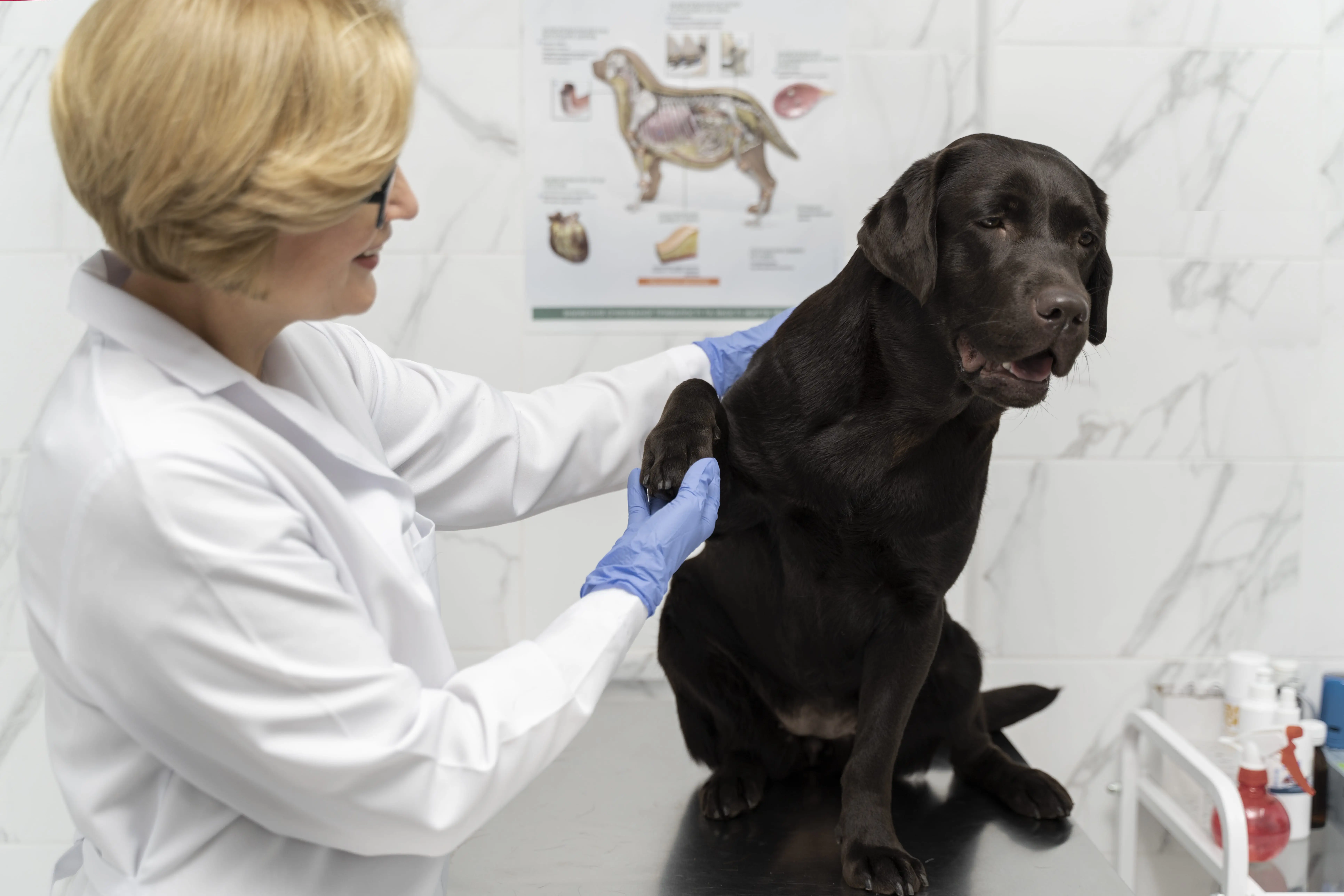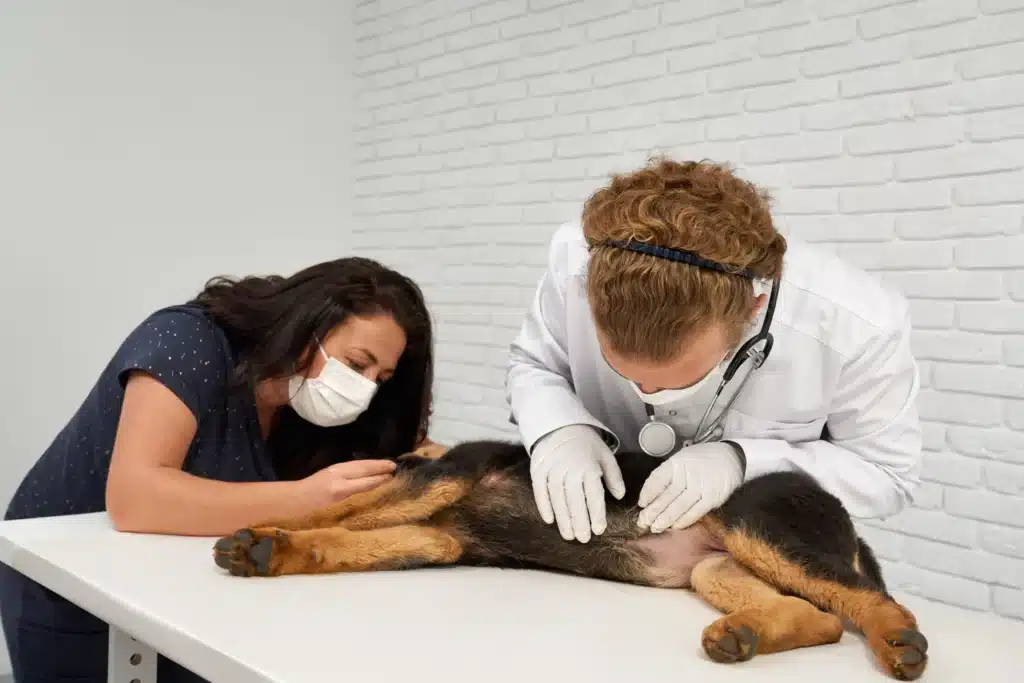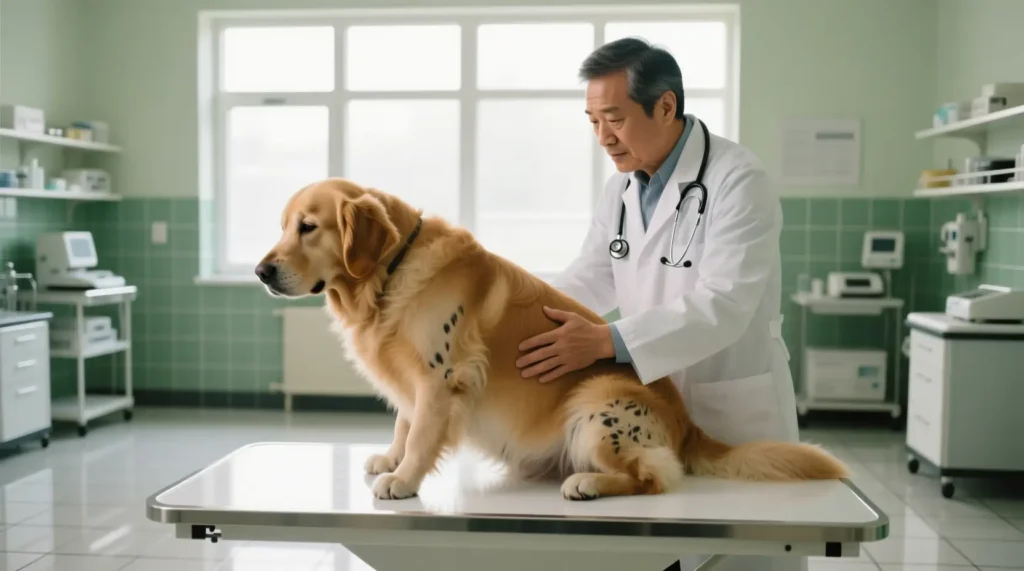Euthanasia should be considered when Cushing’s disease leads to irreversible suffering and profound decline despite optimal therapy and palliative care. Key indicators include persistent pain, inability to eat or move, repeated life-threatening events, and sustained low quality-of-life scores.
This guide provides a more clinical and structured approach, with research, veterinary standards, and helpful tools to support humane decisions.
1. Why euthanasia becomes necessary in advanced Cushing’s disease
Cushing’s disease (canine hyperadrenocorticism) is a chronic endocrine disorder in which excess cortisol causes multi-organ damage over time. Though many dogs live weeks to years under management, in advanced stages the disease may outpace treatment’s ability to maintain comfort and function. According to a veterinary review published on dvm360, dogs with Cushing’s syndrome rarely die directly from the disease itself; rather, they are often euthanized due to progressive complications and overall clinical decline.
Factors driving this decision include:
- Organ failure or decompensation (kidney, liver, heart)
- Uncontrolled secondary diseases (diabetes, hypertension, pancreatitis)
- Refractory infections due to immunosuppression
- Neurologic deterioration (if pituitary tumors expand)
- Severe muscle wasting, anorexia, and dehydration
- Clotting events or respiratory distress (e.g., thromboembolism)
When these changes reduce the body’s capacity to recover, continuing aggressive treatment may prolong suffering rather than life.

2. Quality-of-Life Tools & Objective Assessment
Veterinarians use standardized quality-of-life (QoL) scales to track decline over time; consistent low scores across multiple domains strongly signal that euthanasia should be considered.
A validated tool developed for dogs with Cushing’s, the Health-Related QoL scale for canine Cushing’s, quantifies domains like activity, appetite, general well-being, and disease burden.
Other practical QoL tools (e.g. from ToeGrips) guide owners with questions around mobility, food intake, comfort, interactions, and hygiene.
Example domains to assess:
| Domain | What to look for | Red flag threshold |
| Appetite / hydration | Eats, drinks normally | Refusal > 48–72 hours |
| Mobility | Walks, rises easily | Requires assistance, collapse |
| Comfort / pain | Restless, painful reactions | No relief with analgesics |
| Hygiene / elimination | Manages toileting, no sores | Incontinence + dermatitis |
| Engagement / mood | Responds to stimuli | Withdrawn, no interest |
A dog’s QoL consistent below a threshold (e.g., below 4/10 for several days) often guides the timing of euthanasia.

3. Clinical Red Flags that Prompt Euthanasia Discussion
When any of the following persist despite treatment and supportive care, euthanasia becomes a compassionate consideration:
- Severe, unrelieved pain or suffering even with analgesics or comfort care
- Prolonged anorexia or refusal to drink leading to emaciation, dehydration
- Recumbency or inability to stand — declining muscle strength with no recovery
- Uncontrolled seizures or neurologic decline (from pituitary tumor expansion)
- Refractory infections (UTIs, skin, systemic) not responsive to therapy
- Respiratory compromise or thromboembolic events (sudden difficulty breathing, collapse)
- Multiple QoL domains failing simultaneously, with downward trend
These signs align with broader pet-euthanasia guidelines and humane end-of-life ethics.
4. Veterinary Guidelines & Ethical Standards
Euthanasia in companion animals must follow professional veterinary and ethical guidelines. The American Veterinary Medical Association’s Guidelines for the Euthanasia of Animals (2020 Edition) remain the gold standard.
Key principles from AVMA:
- Euthanasia must be humane, painless, and minimized stress
- Qualified, licensed veterinarians or designated professionals should perform it
- Sedation or tranquilization is recommended prior to the euthanasia injection when appropriate
- Owners must provide informed consent based on clear diagnostic rationale
- The procedure must ensure confirmed death before family interaction
The MSD Veterinary Manual also underscores that euthanasia techniques and procedural standards should conform to such guidelines.
Veterinary ethics discussions also highlight the moral balance between prolonging life vs. alleviating suffering — particularly when a dog’s costs, risks, and discomfort outweigh meaningful quality of life.
5. Step-by-Step Clinical Decision Process
Here’s a template veterinarians and owners often follow:
| Step | Action | Purpose |
| Confirm optimized treatment | Review medications (trilostane, mitotane), adjust dosing, address comorbidities | Ensure decline is not due to under- or over-treatment |
| Document decline | Use QoL scores, body weight trends, lab results, imaging | Create objective record |
| Trial intensified palliative care | Pain management, antibiotics, fluid support, assisted feeding, mobility aids | Assess whether improvement is possible |
| Review red flags & trends | Over days/weeks, check whether improvements plateau or worsen | Identify irreversible decline |
| Owner–vet discussion | Review prognosis, ask the “what if” questions, plan timing | Ensure decisions align with welfare and owner values |
| Time-limited plan | Example: 7–14 day palliative trial; if no recovery, euthanasia | Prevents indefinite suffering prolongation |
This approach helps avoid premature or delayed euthanasia and grounds the decision in measurable decline.
6. Practical & Emotional Preparation
Thoughtful preparation ensures a more peaceful, dignified process for both the dog and family.
- Choose location: Clinic or in-home euthanasia — many clinics offer home services
- Sedation before euthanasia injection to ensure calmness
- Bring comfort items: Blanket, favorite toy, family members
- Decide post-care: Cremation, private burial, keepsakes
- Communicate with children/family ahead of time
- Arrange emotional support: Veterinary counselors, pet loss hotlines
Euthanasia via injection is typically preceded by sedation or tranquilization, then a lethal dose of anesthetic — designed to be painless and irreversible. (See AVMA euthanasia protocols).
7. Case Example & Research Insight
A 2019 study developed a QoL assessment tool specifically for dogs with Cushing’s syndrome, validating domains such as appetite, activity, body condition, and systemic disease burden. That tool helps veterinarians detect when meaningful quality-of-life has declined beyond repair.
Clinically, vets acknowledge that many dogs with Cushing’s are euthanized because their symptoms, comorbidities, or secondary diseases (e.g., advanced infections, uncontrolled diabetes) become unmanageable — not because they “die of Cushing’s” per se.
8. Summary & Key Takeaways
- Euthanasia for a dog with Cushing’s disease is appropriate when suffering becomes irreversible and QoL is persistently poor.
- Use validated QoL tools and multiple red-flag criteria (pain, anorexia, mobility, neurologic signs, infections).
- Decisions must adhere to professional guidelines (AVMA, veterinary ethics) and be made jointly between vet and owner.
- A stepwise process (optimize treatment → document decline → trial palliative care → make decision) helps ensure the timing is humane.
- Preparation, communication, and emotional support are essential for dignity for the dog and closure for the family.


